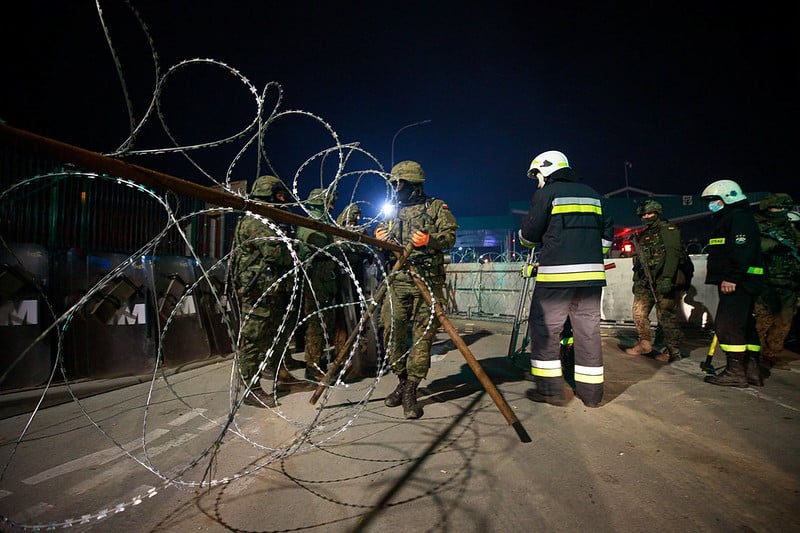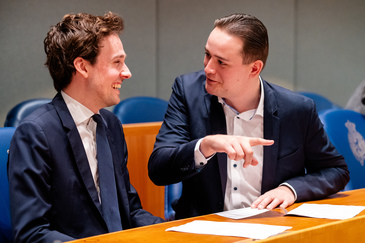Today marks exactly 23 years since the Berlin Wall fell. For Europe, it seemed the impetus to blur borders and bet on unity and free mobilisation. Divisions caused by physical walls seemed to be a thing of the past. Today, however, walls are on the rise again As between Poland and Kaliningrad, the borders of the former Iron Curtain are not disappearing but only seem to be shifting in these days of high geopolitical tensions.
Poland wants to build a wall near Kaliningrad
Poland borders Russia because of the Russian enclave of Kaliningrad. A place increasingly isolated by the sanctions that followed Russia's senseless invasion of Ukraine. The ensuing sanctions and condemnation of the war started by Russia have put Kremlin-EU relations at the lowest level of this century. With the resulting tensions, Warsaw does not rule out Russia using its enclave to destabilise Poland and Lithuania by setting up an illegal immigration flow. Polish Defence Minister Mariusz Blaszczak therefore ordered the construction of a temporary wall between Poland and Kaliningrad. According to Blaszczak, the measure to "close this border" followed after the Russian aviation authority Rosaviatsiya had recently decided to launch new flights between the Middle East and North Africa to Kaliningrad.
Border between Poland and Belarus as an example
Poland's decision to counter the use of illegal migrants as a method of destabilisation with a border wall is identical to what happened earlier on the border with Belarus. Since July 2021, Aleksander Lukashenko, Belarus' de facto dictator, has been abusing migrants by actively piloting them into Belarus and escorting them to the borders with EU member states Lithuania, Latvia and Poland. For Lukashenko, this method of destabilisation, part of what is often hybrid warfare is called. From Minsk, it is mainly in retaliation for European sanctions and discrediting his regime after the fraudulent elections in Belarus in August 2020.
With illegal pushback, an entry ban on members of Polish civil society, the Warsaw government is trying to discourage immigrants from crossing the border. The icing on the cake was the construction of a 5.5-metre-high wall on the border with Belarus. There is no denying that Poland has taken drastic measures against the influx of migrants. The resulting skirmishes at the border were not only humiliating and degrading, but also led to the death of 24 refugees. Incidentally, the wall did not prevent dozens of refugees from still crossing the border. Human rights activists say the wall actually made the situation worse: many refugees seriously injured themselves while climbing the wall. Building barriers like this was strongly condemned by the International Court of Justice when Israel erected a wall along its border with the West Bank. The legitimacy of a wall can thus be questioned. European barriers seem to be considered less controversial internationally. In addition, a rhetorical question that can be asked here is whether such a measure as a wall actually works? It will mainly depend on what goal a country is trying to achieve.
Poland's intervention did result in fewer migrants entering the country. For whom the situation is far from resolved are the migrants stuck in poor conditions in Belarus, where they are subjected to human rights violations such as mistreatment by the police and have insufficient access to much-needed care. As a result, the situation for these refugees remains as dramatic as ever, even though Europe seems to have long forgotten about them. Continental eyes are fully focused on the millions of Ukrainian refugees scattered across Europe since February 2022. At the same time, refugees from other conflict-torn areas such as Yemen, Syria and Iraqi Kurdistan in Belarus are increasingly neglected.
Expansion of "Fortress Europe"
With the observations resulting from the situation on the Polish-Belarusian border, it remains to be seen whether a wall between Kaliningrad and Poland will help prevent a similar situation. "Fortress Europe" continues to expand, with new fortifications on both the continental internal and external borders. The deplorable situations on the borders with Turkey, partly caused by European policies, and the migrant deal struck in 2016 is perhaps the best-known example of how Europe guards its borders. Numbers of incoming refugees are central to this, how to keep this number as low as possible is secondary.
The real victim of this warfare is not the Polish economy or socio-political stability within the European Union, but the refugee who has been forgotten. Although there is no refugee flow from Kaliningrad to neighbouring areas yet, the wall between Poland and Kaliningrad is the next extension of "Fortress Europe". The European Union is reacting reluctantly to the brutal way refugees are being stopped. For Western European countries, preventing these flows is also in their own interests. In doing so, the end seems to justify all means.
When the Berlin Wall was torn down 23 years ago, Europe seemed headed for a future of blurred borders. However, the present shows that building a wall is still one of the first solutions with which Europe fights tensions. Until Europe itself has a unified strategy to deal with refugees humanely, this form of hybrid warfare will remain an option for malevolent regimes like Lukashenko's to destabilise. Whether Putin will also use Kaliningrad in this way remains to be seen.
Sources: Amnesty, CarnegieEurope, DeutscheWelle, EuroNews, Reliefweb, UNHC





